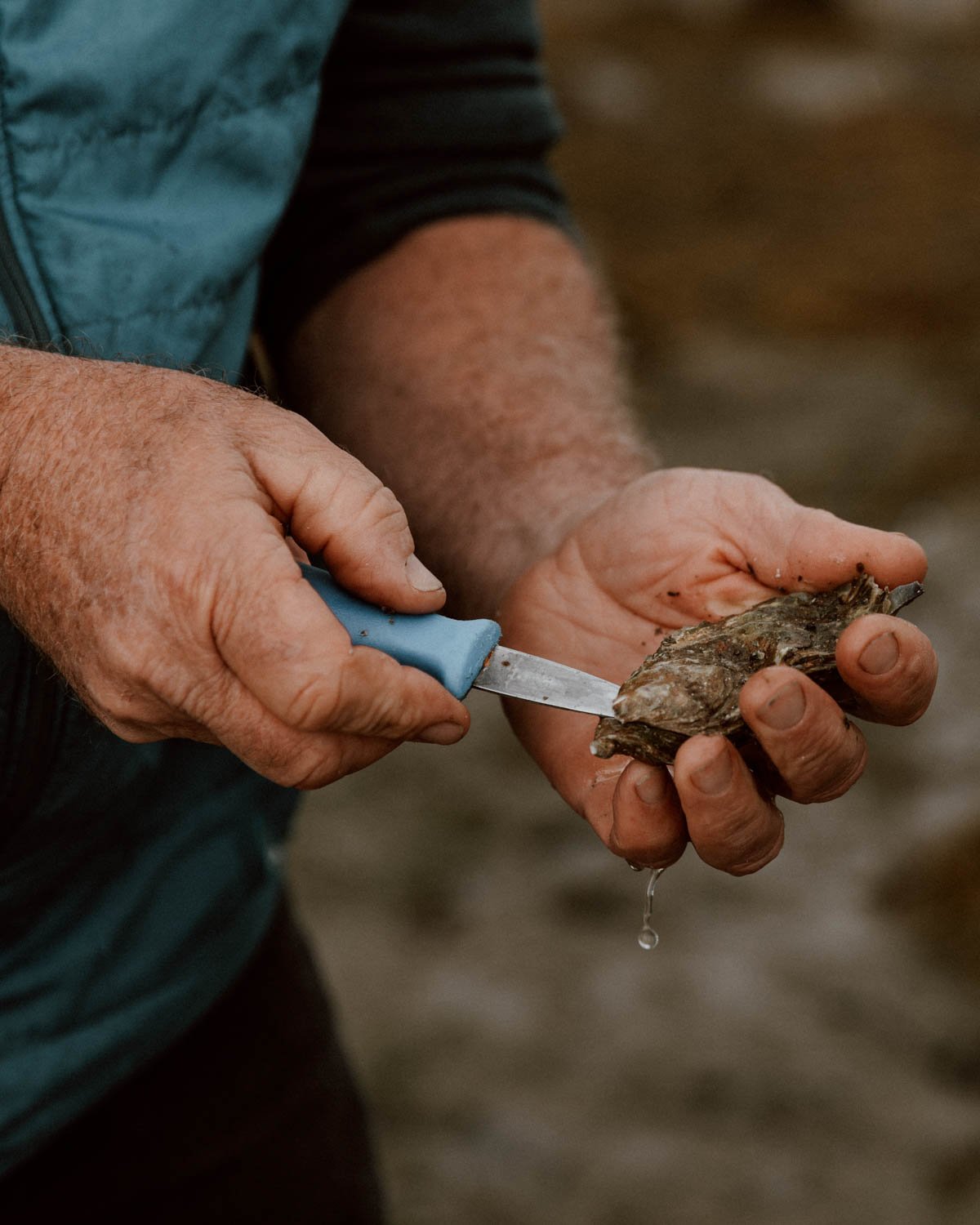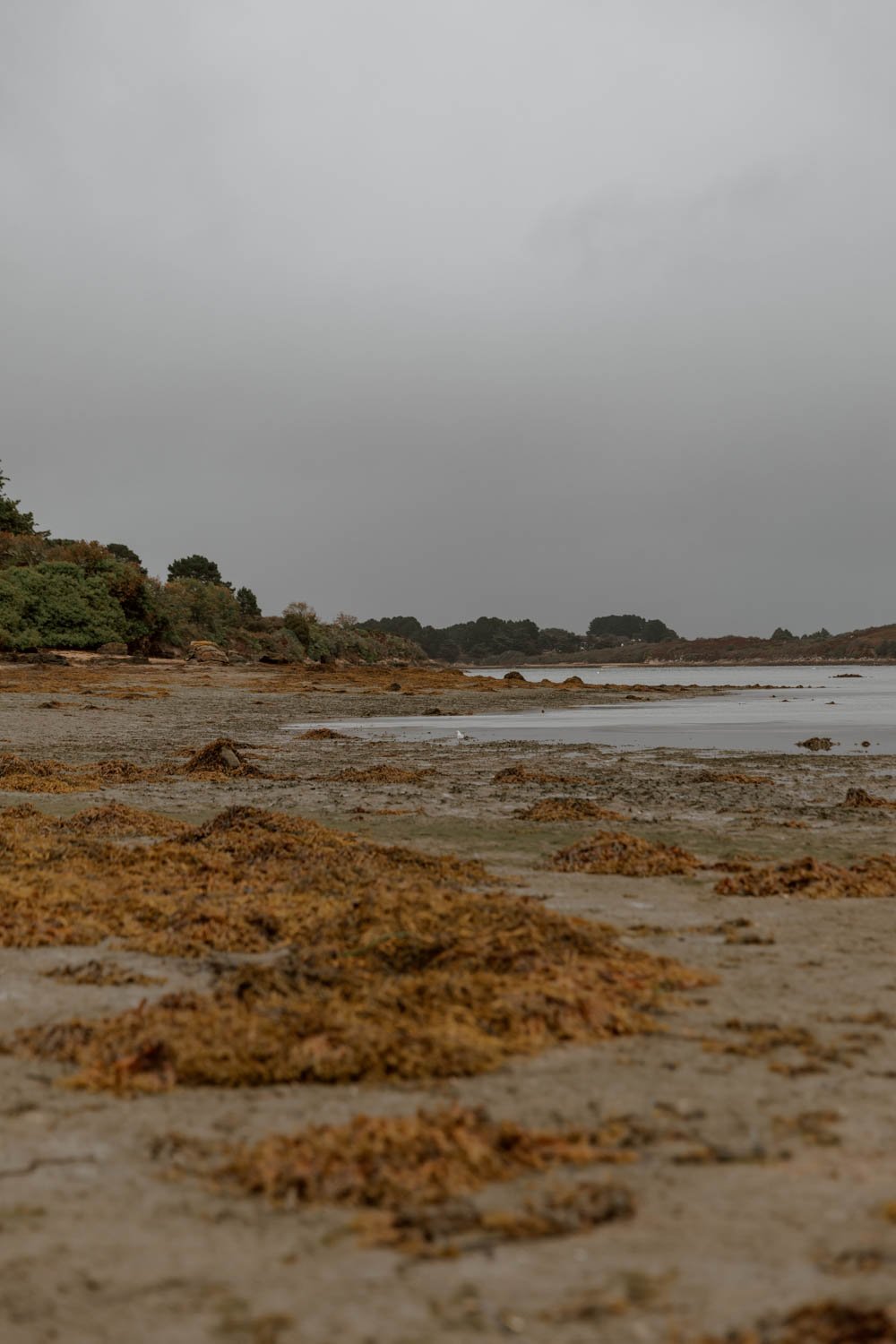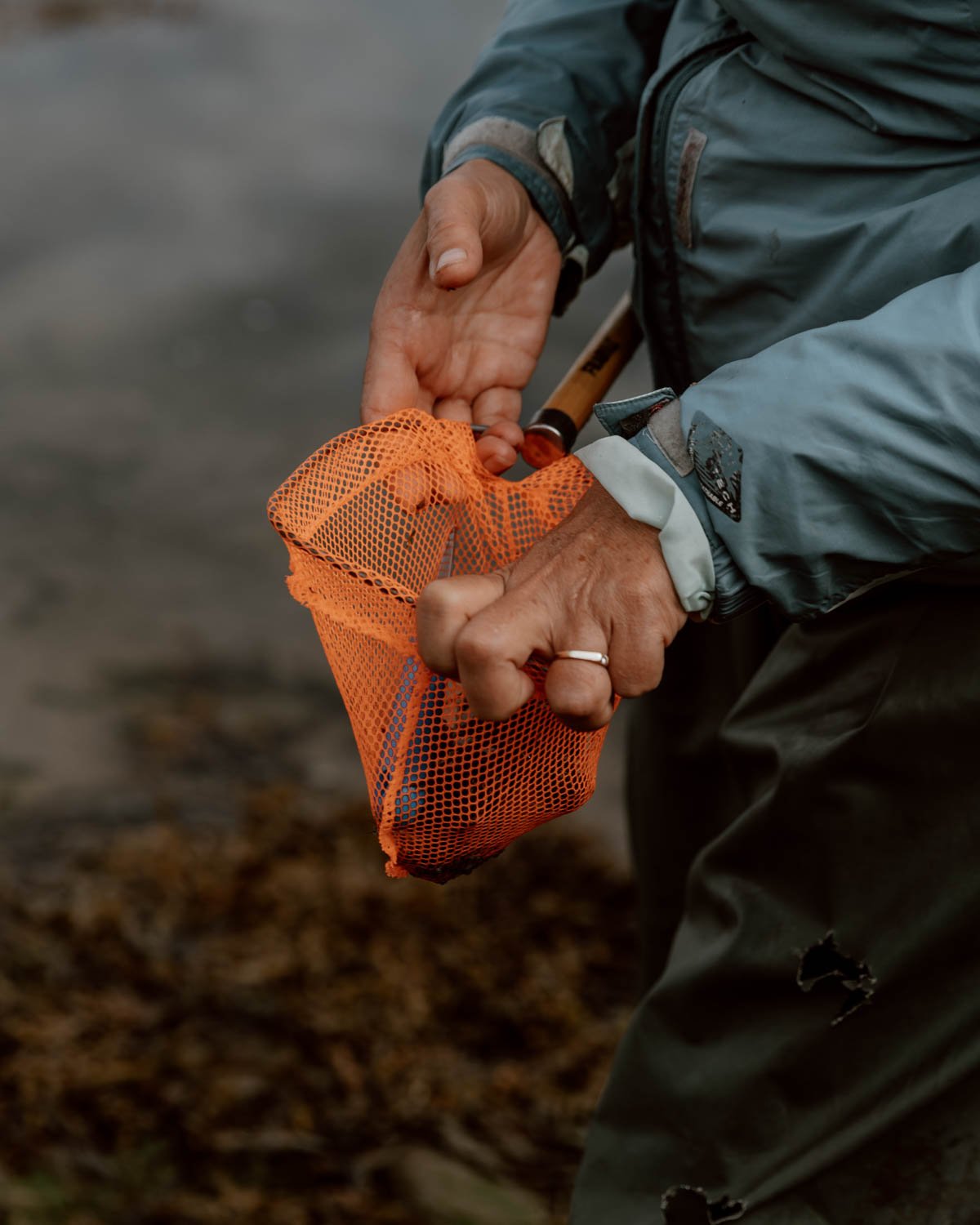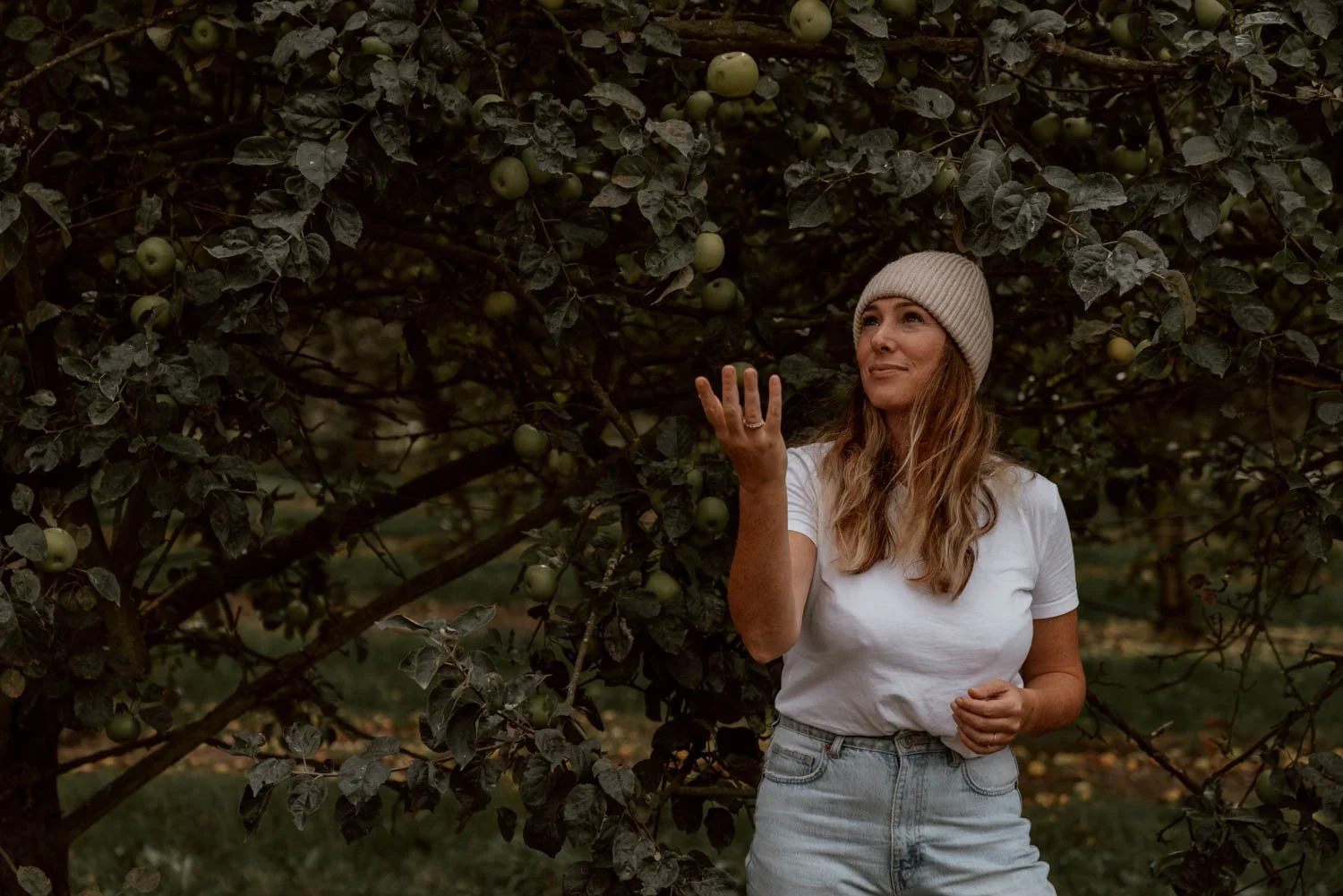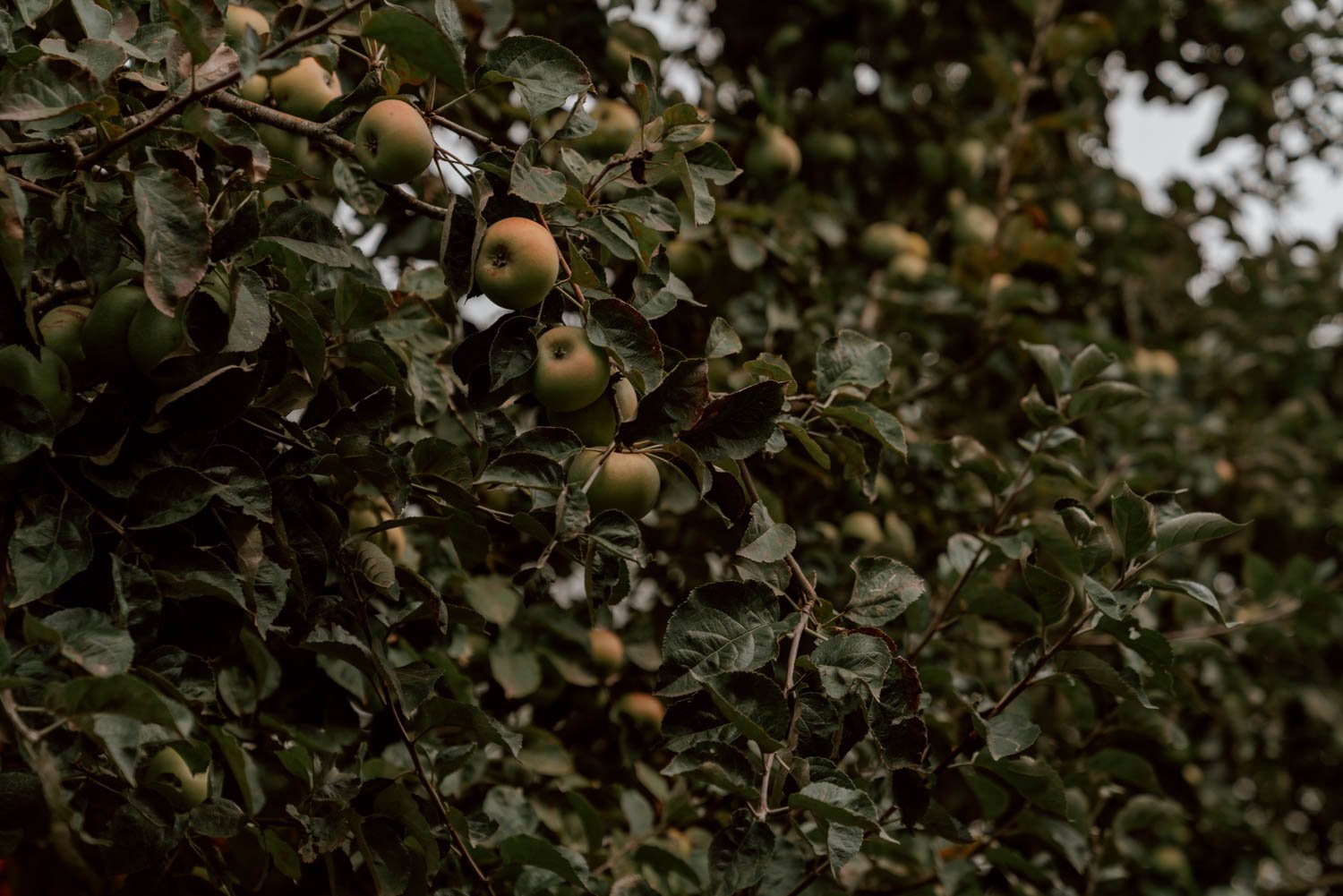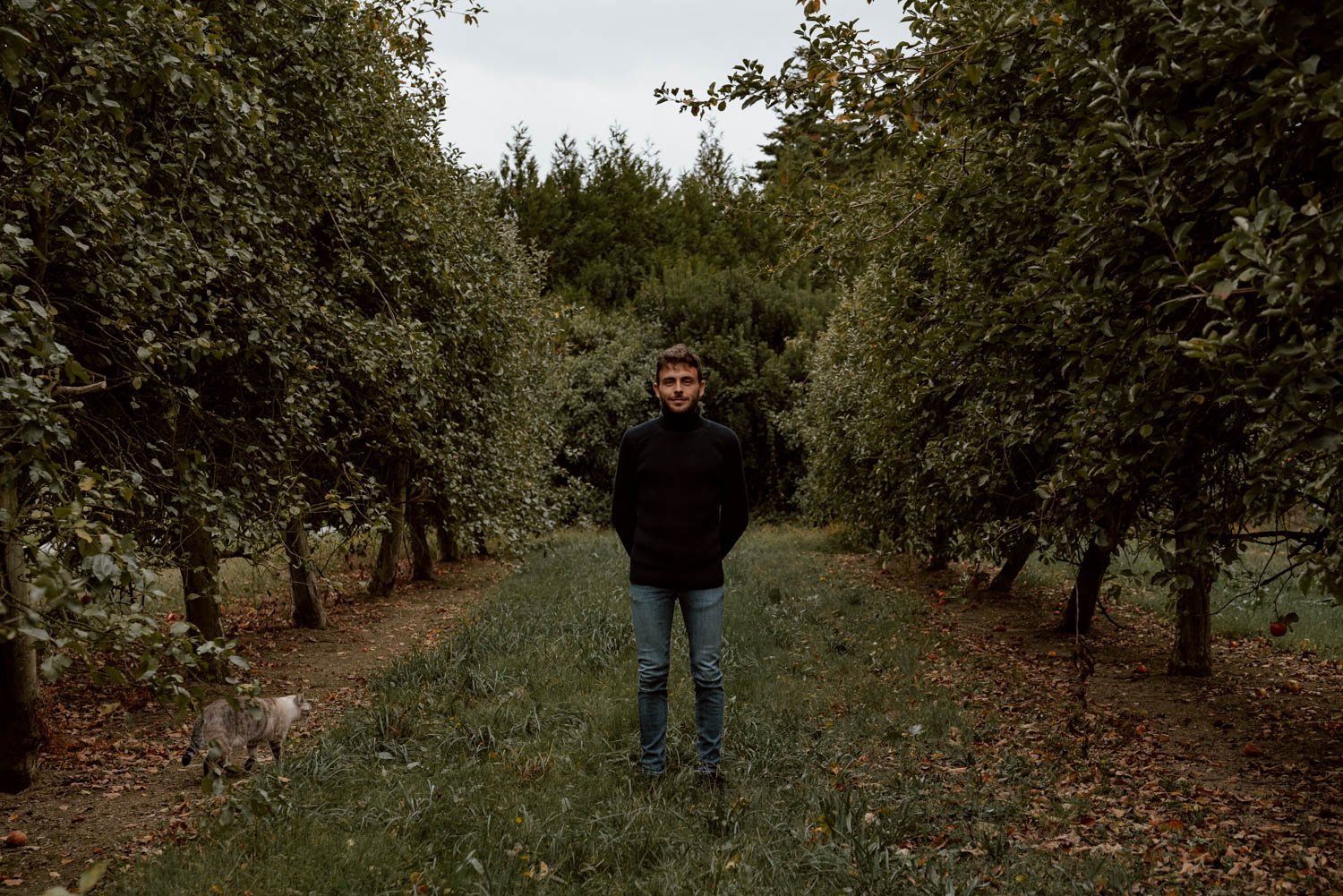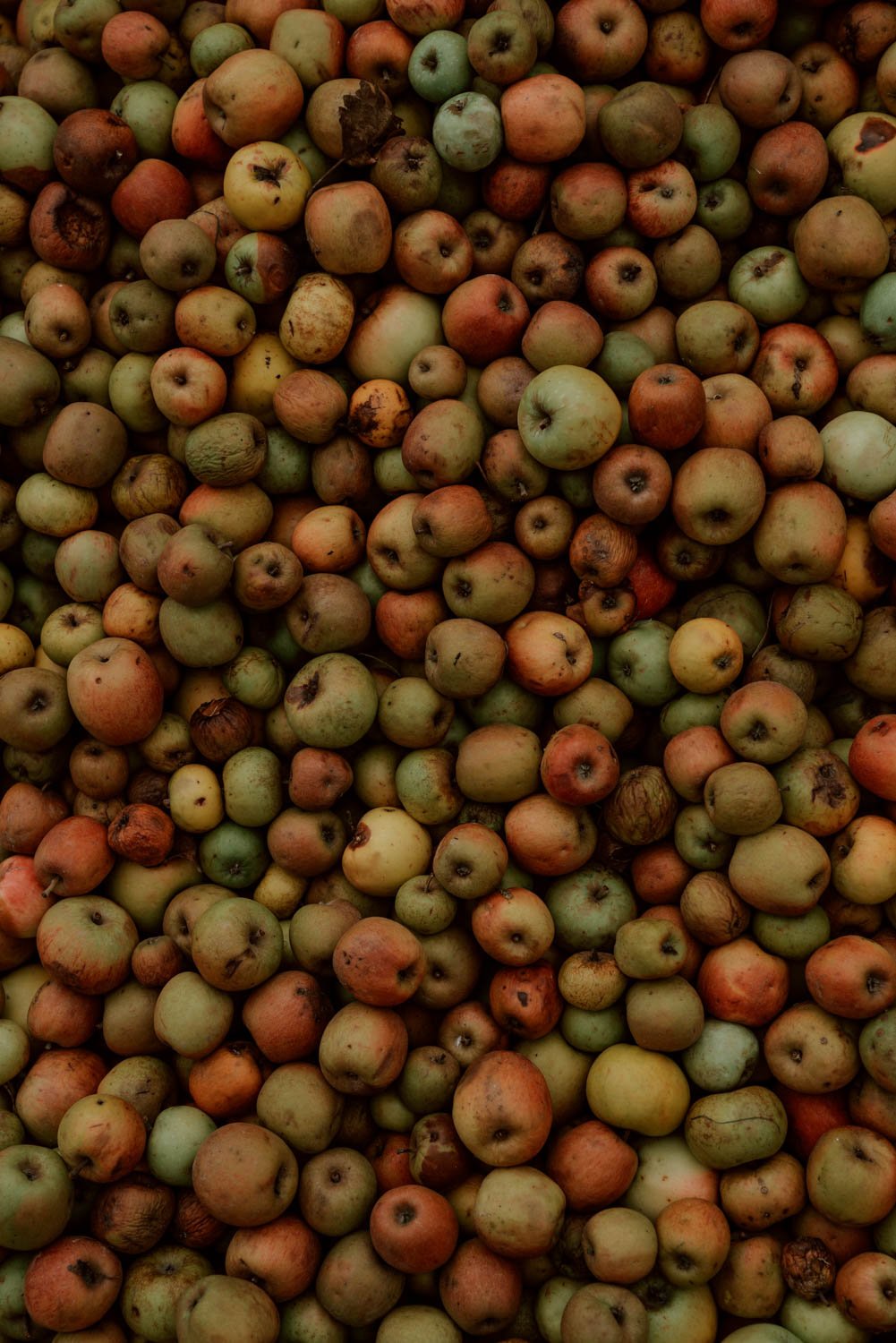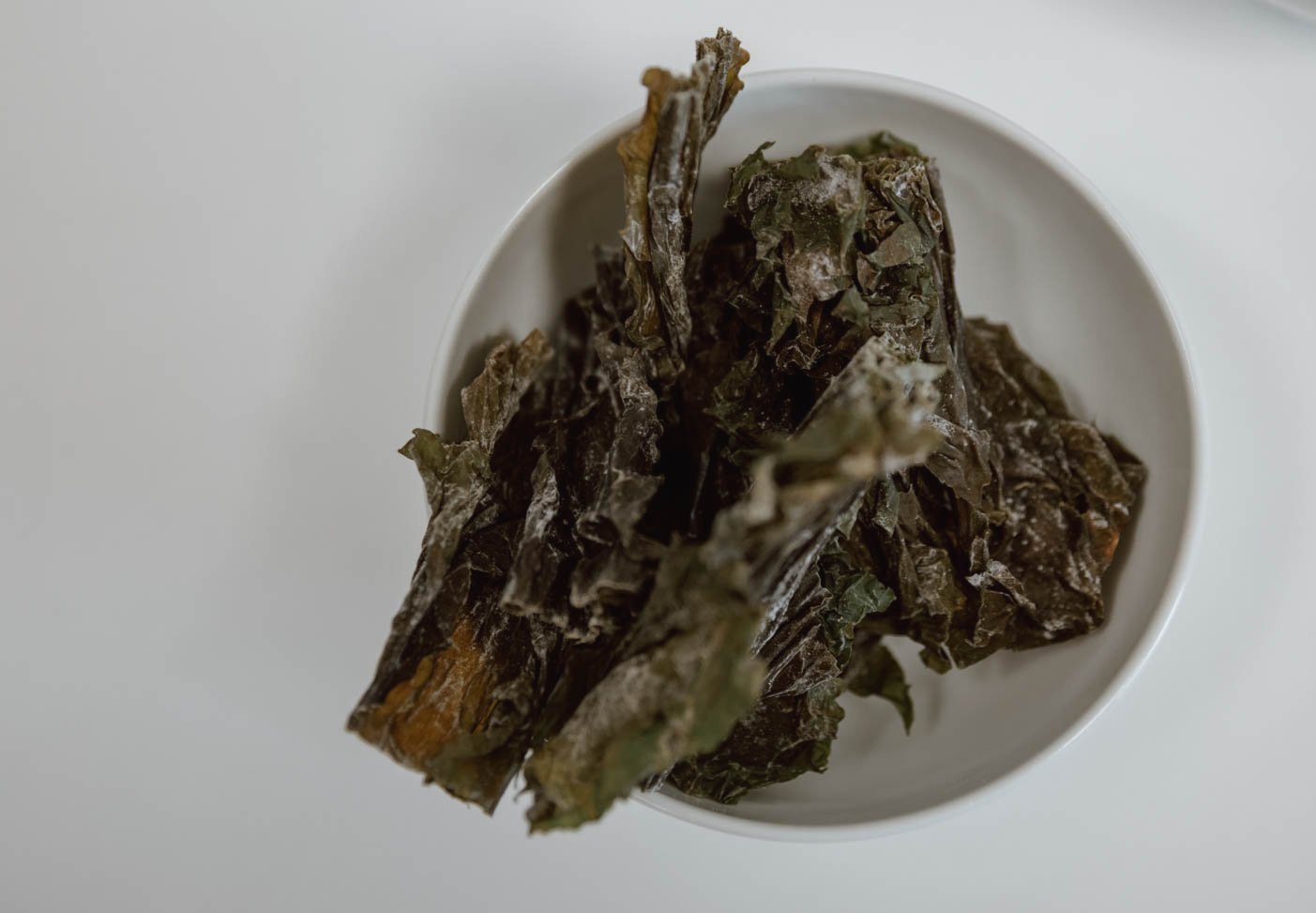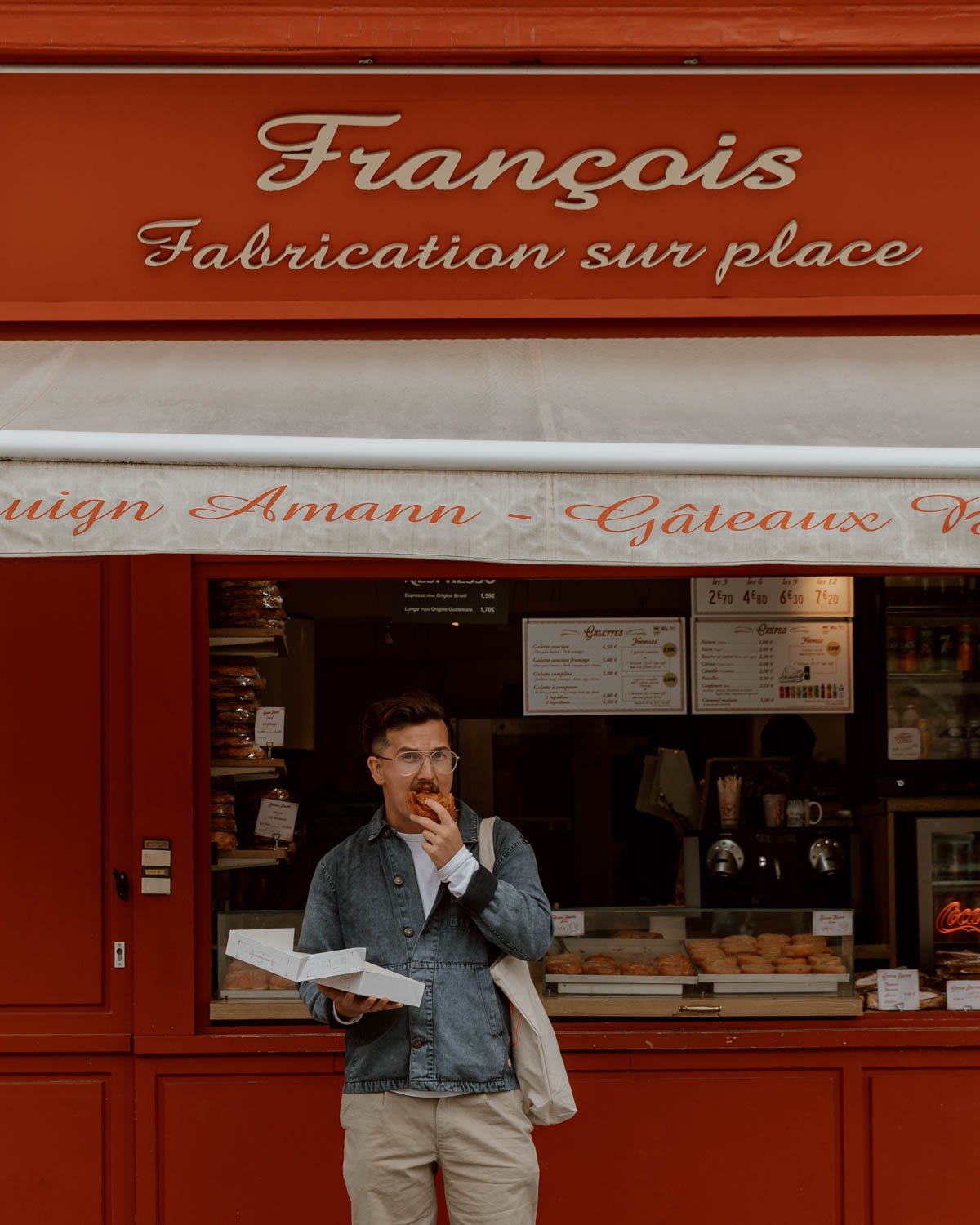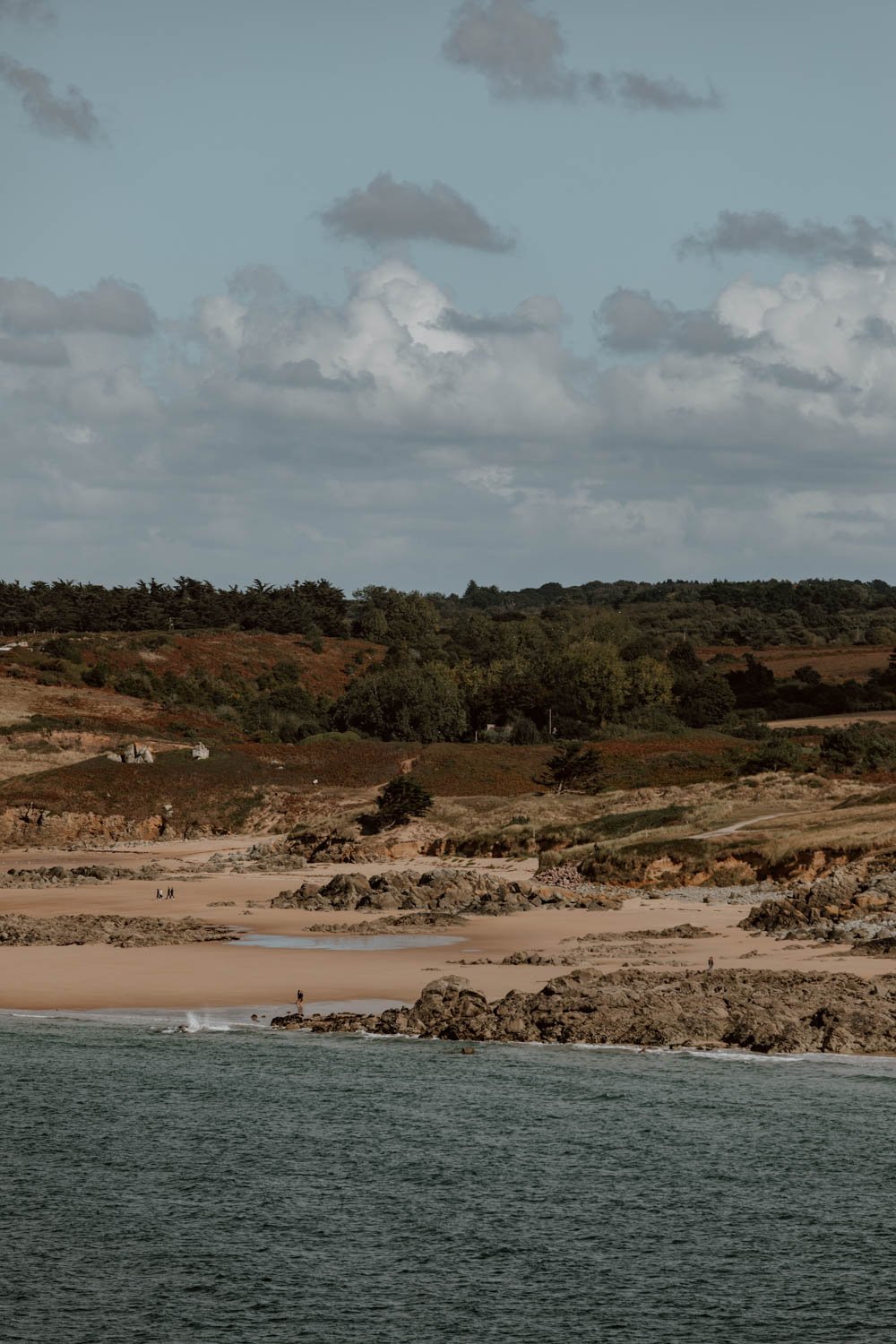It began with a curiously-named pastry early on a Sunday morning.
We had left the shores of England behind the previous night, and sailed over the narrow sea to France by ferry. A flight-free trip - with space to move, an evening meal, a cabin to sleep in, and no concerns about luggage weight limits - was a small joy, and a suitable introduction to the pace that one should adopt for travels in Brittany.
Unhurried. Circuitous. Meandering.
This region of northwest France, where a black-and-white striped flag billows and oysters are a staple rather than a luxury, juts out toward a sea and an ocean and enjoys over 1,600 miles of coastline. Our plan was to cover just a smidge of it in a week - an hors d'oeuvre if you please - by boat and bicycle as well as on foot and with a rental car, embrace nature and get to know aspects of the proud, regional culture.
We did not expect to develop an addiction.
And yet, on a quick post-ferry stop off in a little boulangerie in one of the inumberable pretty villages close to the coast, we were tempted in by envy. All the signature pastries one readily associates with France were on offer, but the man ahead of us in the queue, pointing at four golden slabs from the metal tray atop the counter, knew exactly what he wanted.
He looked like he knew a thing or two about good food.
"Est-ce on peut avoir deux de la même, s'il vous plait?"
We heard a groan behind us as the young woman placed the last two into a paper bag, and bid us a ‘bon dimanche’ as she passed them over; clearly we had spoiled another customer’s Sunday treat.
Their disappointment would however lead to our first taste of a salted butter concoction, famous across Brittany but little known outside it, of pure caramelised pastry indulgence.
The only problem was that we had no idea what it was called.
The Oyster Picker
““It always tastes better by the sea.””
Treasures in Brittany are only revealed when the tide is low.
They are not of gold or silver, but of hard shell and salt beneath soggy stacks of seaweed.
When the sea retreats to unveil a hidden world twice a day, locals in the know - preserving or reviving age-old traditions - venture to prise and pluck these curious creatures from the wet rocks they cling to like a newborn.
The pearl-maker, not its pearl, is their prize.
Oysters from Brittany are revered across France. There about a dozen growing areas in the region, and when the water recedes you'll spy the black skeleton structures of oyster farms large and small dotted all over the coast. A delicacy we’ve always associated with the wealthy, or those trying to give off the illusion of it, huîtres here in the northwest are a different kettle of fish (teapot of molluscs perhaps?): advertised on clapboard, chalkboard, and hastily hand-written signs; stacked high and sold affordably in markets; as common as potatoes on restaurant menus.
Egalitarian and eaten year-round, feasting on them is a dearly-held Christmas and New Year tradition.
Armelle is named after a Welsh saint, has black curls and glasses, and meets us in the rain by a 12th century mill. We've packed welly boots especially for the occasion, and she's brought her buckets, trays, and nets - all the necessary tools of a treasure hunter in Brittany.
Now, truth be told, neither of Along Dusty Roads is a big fan of oysters. A gulp of saltwater followed by a slippery glob to chew on or slowly slime down your throat certainly isn't our idea of tasty, and we've never been in a rush to order them over, well, many other prima facie delicious things.
But we know that people who love oysters, really love them.
Armelle explains that, beyond our harsh dismissal of the flavour profile, there's a lot more sophistication at play. “You can tell a lot from the taste and shape of an oyster - how much water it filters, the rocks it formed upon, and even down to whether it's from this part of this bay or that part of the bay,” she explains.
Their individual flavour is also just as influenced by their terroir as wine or whisky.
So, whilst we may simply taste saltwater and be reminded of childhood fears of drowning at sea, others can pick up distinctive notes of butter, melon, cucumber, and mushroom.
For Armelle’s experienced eye, there’s also a clear difference between the farmed and the foraged, with the shape and the layers of one naturally clinging to the rocks creating a “fingerprint that’s much more beautiful” than those which are shaped and handled up to fifty times to give the impression of the non-cultivated oyster.
Regardless of origin though, for Armelle, any oyster always tastes better by the sea, and Brittany’s significant tidal shifts present the ideal conditions to for her to forage and others to farm. With as much as fifteen metres variation between high and low, the tide’s range underpins the shape and nature of the coast and many traditions in Brittany: it transforms the grand plage of Saint Malo twice a day; powered mills on the Île d’Arz and elsewhere; and enables a thriving aquaculture industry.
Armelle takes us into the shallow and, within a few minutes, locates a cluster of near-mature oysters sequestered under blankets of seaweed; they would be imperceptible to our untrained eye - simply a rock on a rock - but for her it’s a delicacy-in-waiting.
With a short blade on a blue handle, she quickly detaches her treasure so that one of us gets to swallow it whole before the sea does.
The Cider Man
““This is the Breton champagne.””
Emily comes from England’s cider country, and our standard order down at the local is two pints of the good stuff.
Now, some of you may read this and think we're talking about certain sickly sweet or flavoured concoctions of the Scandinavian variety, but no, we're talking proper, decent cider.
The drier the better and, for a proper cider lover, there are few better places to venture than Brittany.
Valentin greets us in the mid-morning with a full bottle of sparkling apple alcohol. A handsome fourth-generation cidre producer dressed in a smart navy blue polo neck, he obviously knows how to get on our good side.
It does however come with a catch.
He insists, despite our protestations, that we have to wait thirty minutes or so to imbibe his family’s award-winning cider. This isn't due to any law or sense of decorum, but because there's some learning to be done.
One of the two main cider apple-growing regions in France (the climate is perfect), there's a long, strong history of cider in Brittany. ‘La Maison du Cidre de Bretagne’ is perhaps the ideal place to gain and understanding of this, with various exhibits, tools, and machines tracing its transition from manual, personal production on farms and by families with their own press or a shared-community one, to large-scale mechanisation in and around the 19th century.
Valentin tells us in his wonderfully accented English, that a single press took four days with the manual machines, but you could get three presses PER HOUR with the industrial ones. Such a radical transformation may explain why the average Breton adult was drinking 400 litres per year at one point in time - an amount that just about beats Emily’s!
After the tour, we sit to taste far more sensible volumes of the good stuff.
La Maison is the public-facing museum and shop of ‘Cidrerie Nicol’, a family-owned artisanal cider maker since 1928, and all of their range come in corked, long-neck wine bottles rather than the cans or clear, bottle-top glass we're used to seeing in the UK.
Their most famous brew is Royal Guillevic, France’s only Label Rouge cider and commonly referred to as the champagne of Brittany.
Crafted from the "queen of cider apples", we sip it from flutes, and the crisp, elegant taste reflects that this cidre with a refined French accent is something that should not be glugged.
Served this way, the humble apple is transformed into a drink that could absolutely could be considered an acceptable alternative to the sparkling wines of France, Spain, and Italy on a balmy summer afternoon.
Summer is however long gone on our visit but, as it's late September, we're thankfully just in time for the start of the harvest season.
On our drive around the countryside, orchards weighed down with several varieties of cider apples are a wonderfully common sight and, at one of Valentin's nearby orchards, we get to appreciate the sheer scale of produce required to be sorted, washed, crushed and pressed to make both apple juice and cider. "From one tonne of apples,” he says, "an artisan can make 700 litres, but the big companies can make about 1,000." The difference with the big boys? They use lots more water and, perhaps, a few other things which the traditional artisans would never consider.
Across our week, we come to appreciate how core cider is to the distinctive Breton palette. Served up by the pitcher or in little teacups (called bollée), it accompanies the excellent savoury buckwheat galette pancakes devoured across the regions's signature creperies. Every bar and restaurant by the coast and in the countryside has at least one local bottle available, and its place on the table with lunch or dinner is as deserved as a wine.
However, our favourite example of the ubiquity of cider here, is the spin on the Kir apéritif.
Popular across France, we first heard a Kir Breton ordered in a little bar on the Île d'Arz and curiosity got the best of us (we have a habit of simply copying whatever we see a local order by the way).
At first sip, it hardly came as a surprise to find that the white wine in our afternoon tipple was swapped out, and the crème de cassis instead paired with, well, do we really have to tell you?
The Seaweed Scientists
““You need green hands and blue.””
Magali and Jean-François have a field on the sea.
On the north coast of Brittany, in perhaps the most famous area for oysters, we meet the pair of married marine biologists in the brand-new laboratory where they are maintaining a coastal tradition as old as the tides.
Together, they grow, harvest, and dry organic seaweed - a process split between the land-based lab and sea-based farm - and play a key role in Brittany's status as the largest producer of seaweed in Europe.
So, why on earth would one bother to grow something that, frankly, smells quite a bit, isn't that appealing to look at, and seems to grow in abundance naturally?
Seaweed gatherers have been part of Brittany's coastal population since the 15th century. The plentiful, free and relatively easy to access resource, would be collected from beaches, dried by wind or on sand dunes, and used to burn, heat, farm, feed cattle or stuff bedding. By the 17th century it had been identified as a useful ingredient in the creation of glass, creating a more competitive environment and industry, meaning the gathering of it had to be restricted and regulated by Louise XIV as disputes had become so commonplace on the coast.
Yet, contrary to our assumptions, the ubiquitous seaweed wasn't traditionally eaten here. Jean-François, who is as close an authority on all things seaweed as they come, is adamant that its primary use in Europe for centuries was as a soil fertiliser, never a food, and bristles at how often the misconception comes up in print.
However, as Emily's kick-ass ramen calls for an outrageously expensive piece of kombu to sit in water for an hour, we know that eating seaweed is established in Japanese culture and an increasing foodie trend over here. When did things change?
According to Jean-François, outside of a small pocket in Iceland and desperate times in famines, seaweed was always for agriculture and animals, not human consumption.
"The foodie trend really only started," he says, “in the 1970s via the spreading influence of Japan and the US". If it was eaten before that, there was shame and cultural silence attached to it.
Given how evident Breton pride is, and how staunchly traditional many French menus are, one would certainly expect at least one regional dish to feature seaweed if Jean-François was mistaken, and we don’t know any.
Magali and Jean-François are however driving and benefitting from the greater cultural awareness of seaweed as a multifaceted product for the modern world; a contemporary reevaluation of what always existed in nature. Magali passionately outlines how its myriad of nutritional and environmental benefits are being recognised and harnessed in disparate industries from cuisine to cosmetics, animal feed to agricultural fertiliser, microbiology to pharmaceuticals.
It is the environmental benefits of seaweed which is most exciting to us though. Jean-François details how cultivating it organically and responsibly can significantly reduce the negative impact of fish farms, decrease land and chemical-dependency required for agriculture, act a natural ocean-cleaner and habitat creator. Its use by another Breton company as a key ingredient to create a natural, renewable alternative to plastics is however the most revolutionary and exciting modern reimagining of a plant most of us hardly ever notice.
It's also beginning to feature more regularly in innovative restaurants, and we're fortunate enough to be joined by Maud, a local chef, who incorporates Breton seaweed into a number of delicious, vegetarian and Japanese-focussed dishes, both as an essential ingredient and a delicious salty, umami seasoning.
Given their practice is incredibly scientific, innovative and modern, yet also preserving as ancient and deep-rooted a trade here on the Atlantic Coast as there can be, we’re curious about how the husband and wife duo view themselves. They wear white coats and test in the lab, but don waterproofs to go out in the boat to collect by hand in spring.
Are they scientists, sailors,or farmers?
"For this job, you need green hands and blue - we’re all of them.”
The Kouign Amman Addiction
““Less than two a day is negligence.””
It's raining before we go on the search for oysters, but the L'Air Marin restaurant is full. There's a buffet of international cuisine, but we enter for a quick caffeine hit. At the bar, moustached men on lunch break sip at espressos in cups and kir breton in glasses, and it's clear some lunches will be longer than others.
Short on time, we nip to the bakery next door to grab a sandwich for the car, and the pastries are all-too-tempting. Some are pierced by a cocktail stick carrying an unfluttering little black-and-white paper flag, the emblem of Brittany carried on boats, stuck on cars, and draped on the side of homes. Based on the Stars and Stripes, we've noticed it several times already on our trip, but here in the boulangerie, it causes a flutter of excitement.
The glazed, indulgent looking pastry it’s planted in looks familiar.
"Comment s'appelle cette pâtisserie,madame?”
"Ca? C'est un kouign amman.”
To us, it sounds like the lady is telling us that it's a Queen Amman but, surely, royalty and the capital of Jordan aren't the right combination.
We ask her to repeat it, but it's the same result.
Grasping, with all the right French words but likely in all the wrong order, we ask if it's a Brittany pastry because of the little flag marking it out from most of the others. “Bien sûr,” she says, and with a queue beginning to emerge, we promptly buy two to eat later.
The sandwiches lasted longer.
It was Armelle, packing her foraging kit in the boot of her car, who solved the mondegreen for us - "It's a kouign-amman, a Breton word, and they're best if you warm them up a little" - and gave us the keys to the kingdom.
We shared the good news with our Instagram followers, and it transpired that to travel or live in Brittany means - alongside enjoying the nature, the coast, the trails - developing a craving for this sweet treat with an sinful layering of pastry, butter, and glazed sugar.
Meaning 'butter cake' in the Breton language, it becomes our twice-daily ritual wherever we go. Between exploring the streets of Vannes in the south and Saint Malo in the north, stopping off on the way to coastal cycle rides or boat trips to islands, and at road-side biscuiteries, we seek it out and whisper our order like a secret password. Followers tip us off, like prohibition bootleggers, on where to get the best ones and how to time it for a freshly baked batch.
The crumbs in the rental car mount up, and balled up paper bags from boulangeries in the back seat trace our travels across Brittany.
We know a diet is around the corner when we return to the shores of Britain.
But perhaps it’s not our fault, this new addiction to what has been dubbed ‘the fattest pastry in Europe’ by the New York Times. Maybe, in a region surrounded by the sea, where the wind carries the taste of the rising tide, stacks of oyster half-shells are piled on tables, and drying seaweed strips hang in the breeze, you need something just that little bit sweeter to find a balance.
Where We Went in Brittany
We travelled in partnership with Brittany Tourism, and have shared our itinerary below give you ideas and inspiration for your own slow trip through northwest France. We’ve also included useful links to our guides and theirs, as well as to the producers we met along the way.
· We travelled on the overnight ferry from Portsmouth to Saint Malo as foot passenger, but you can also board with a car or campervan. Find more details on the ferry crossing, routes, and prices here.
· There are car rental companies at the ferry terminal in Saint Malo, and we collected our car there before heading west to collect bicycles from Camping Les Salines, and cycle along the coastal pathway to Cap Fréhel.
· After a night at Hôtel de Diane in Sables-dʼOr-les-Pins, we drove south to Arzon to collect oysters with Armelle, and stayed the night at Chambres d'Hôtes La Bellevue in Séné.
· From Séné, we took the car to eat locally-made sweet treats at Bicuiterie des Vénètes, and then joined Valentin for a tasting and tour at Maison du Cidre next door. We explored the streets of Vannes in the afternoon, with dinner and drinks at the Awen Brew Pub, where they brew the craft beer on site.
· The ferry to Île d'Arz can be caught from Séné and Vannes, and we explored the small island on foot and with electric bicycles across two days. It's possible to do a daytrip, but we stayed at the excellent new Lodges de la Vigne.
· The following days included a visit to Suscino Castle, a wander around Malestroit, and a self-guided electric-powered boat trip on a 'Pénette cabanée’ from La Gacilly along the Nantes-Brest canal. We spent the night at the fantastic Léhontine guesthouse in Dinan.
· Our final full-day brought us to Cancale and the northern coast for our seaweed workshop, followed by a sunny afternoon in Saint Malo, before taking the ferry back to Portsmouth in the morning.
Where to Next?
The Île-D'Arz Travel Guide | An Island In Brittany
How to Spend a Day (Or More) In Vannes
The Best Things to Do in St Malo (published soon)
A Journey Through Nouvelle-Aquitaine
Our Favourite Things to Do in Angouleme



